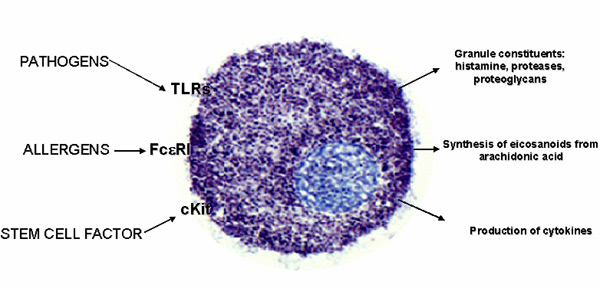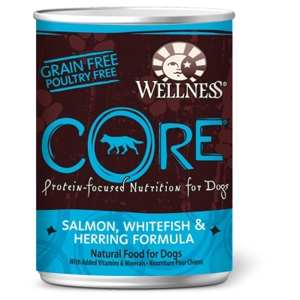Cats are obligate carnivores
Saturday, July 28, 2012.
Dr. Peterson's blog contains much information I find very relevant in practice on a daily basis.
The item posted in its entirely below from his blog, in particular, is at the heart of many clinical problems I see in cats, directly related to diet.
The implication of the post for cat owners is to avoid dry foods (carbohydrate).
- Meat is Protein.
- Cereals such as rice, oatmeal, wheat and others ( baked into kibble) and starchy veggies such as potatoes and corn, are Carbohydrate.
Please read on........................................
Dr. Mark E. Peterson
Cats and Nutrition: Some Key Nutritional Facts
I recently attended a lecture given by by Dr. Deb Zoran of Texas A&M University on the topic of "Protein: the Key to Metabolism, Health, and Management of Obesity in Cats." As you may already know, Deb wrote one of the seminal articles about feline nutrition now over a decade ago (1), and she is a world renowned expert on nutritional needs of cats and how to feed them (2-4). She is a Diplomate of the American College of Veterinary Internal Medicine (currently the President-elect) and also has a PhD in Nutrition.
In this blog post and the next, I'd like to share some of what I learned from Deb's excellent presentation. If you care for cats in your practice, this is all important to know, no matter what the clinical problem.
Feline Nutrition
Cats are obligate carnivores. This statement is news to no one, and yet we often don’t recognize the importance of that statement or feed them accordingly. While cats can use carbohydrates as a source of metabolic energy, they have no requirement for them (nor do dogs for that matter). But, more importantly, because cats evolved consuming prey (e.g., high protein, low to moderate fat, minimal carbohydrate), they are metabolically adapted for higher protein metabolism and lower carbohydrate utilization.
What does that mean metabolically and nutritionally? There are a number of specific metabolic and biochemical differences in feline physiology that are important. This is very important to consider when treating many feline endocrine disorders, especially diabetes and hyperthyroidism.
Cats and Nutrition: Some Key Nutritional Facts
- Cats have an obligate need for protein and amino acids in their daily diet because they are unable to down regulate their urea cycle or transaminases (protein conversion to energy) as other species can in times of starvation.
- Cats utilize protein for energy, even in the face of large amounts of carbohydrates in the diet.
- Taurine, arginine, methionine, cysteine, and possibly carnitine requirements for cats are greater than non-carnivores.
- Arachidonic acid is also an essential fatty acid in cats (it is not in dogs), and is found only in fats from animal tissue.
- Cats require vitamin A and D to be present in the active form in their diet as they are unable to synthesize adequate amounts from other dietary precursors (e.g., carotenoids or vitamin D precursors in skin).
- Cats have an increased need for many B vitamins in their diet (e.g., thiamin, pyridoxine, niacin, pantothenic acid) as they have greater metabolic needs for these vitamins and cannot synthesize or get them from other sources.
- Salivary amylase is absent in cats, and they have greatly reduced levels of intestinal and pancreatic amylases – so carbohydrate digestion is much less efficient.
- Cats have fewer disaccharidases and other brush border enzymes in their small intestine designed to digest and absorb starches.
- The small intestine of cats is much shorter than that of an equally sized omnivore – longer GI tracts are necessary for handling of complex carbohydrates.
- Cats have greatly reduced activities of hepatic enzymes (e.g., glucokinase) designed to convert a post prandial glucose load to glycogen and thus are less able to handle this glucose load.
- There are no fructokinases in cats – they are unable to utilize fructose and other simple sugars.
My Bottom Line
What this list clearly points out that is that cats are not designed to eat carbohydrates as a source of metabolic energy. Instead, cats are metabolically adapted for higher protein metabolism and lower carbohydrate utilization. Therefore, why aren't we all recommending diets (low carb, higher protein) that better meet their needs, and feed cats what they were designed to eat?
References:
What this list clearly points out that is that cats are not designed to eat carbohydrates as a source of metabolic energy. Instead, cats are metabolically adapted for higher protein metabolism and lower carbohydrate utilization. Therefore, why aren't we all recommending diets (low carb, higher protein) that better meet their needs, and feed cats what they were designed to eat?
References:
- Zoran DL. The carnivore connection to nutrition in cats. Journal of the American Veterinary Medical Association 2002;221:1559-1567.
- Zoran DL, Buffington CAT. Effects of nutritional factors and lifestyle choice on the health and well-being of indoor cats. Journal of the American Veterinary Medical Association 2011;239:596-606.
- Zoran DL. The unique nutritional needs of the cat. In: Ettinger SJ, Feldman EC (eds). Textbook of Veterinary Internal Medicine, 7th edition. Saunders Elsevier, 2010;652-659.
- Zoran DL. Obesity in dogs and cats: a metabolic and endocrine disorder. Veterinary Clinics of North America Small Animal Practice 2010 Mar;40:221-39.
Obesity is defined as an accumulation of excessive amounts of adipose tissue (fat) in the body, and has been called the most common nutritional disease of dogs (and cats) in Western countries. Most investigators agree that at least 33% of the dogs (and cats) presented to veterinary clinics are obese, and that the incidence is increasing as human obesity increases in the overall population. Obesity is not just the accumulation of large amounts of adipose tissue, but is associated with important metabolic and hormonal changes in the body, which are the focus of this review. Obesity is associated with a variety of conditions, including osteoarthritis, respiratory distress, glucose intolerance and diabetes mellitus, hypertension, dystocia, decreased heat tolerance, some forms of cancer, and increased risk of anesthetic and surgical complications. Prevention and early recognition of obesity, as well as correcting obesity when it is present, are essential to appropriate health care, and increases both the quality and quantity of life for pets.
|
Posted:
19 Mar 2013 04:44 PM PDT
The rates of overweight and obesity in dogs and cats in the U.S. continued to increase in 2012, with the number of overweight cats reaching an all-time high. Results of the sixth annual National Pet Obesity Awareness Day Survey, conducted by the Association for Pet Obesity Prevention (APOP), revealed that 52.5% of dogs and 58.3% of cats were overweight or obese (Figure 1). That equals approximately 80 million U.S. dogs and cats at increased risk for weight-related disorders such as diabetes, osteoarthritis, hypertension, and many cancers.
As Dr. Ernie Ward, APOP’s founder and lead veterinarian for the survey states. “Pet obesity remains the leading health threat to our nation’s pets. We continue to see an escalation in the number of overweight cats and an explosion in the number of type 2 diabetes cases.” And veterinary endocrinologist and APOP board member Dr. Mark Peterson agrees: “The soaring rate of feline and canine obesity is taking a terrible toll on our animals’ health. There is a vast population of overweight cats and dogs facing an epidemic of diabetes. The best preventive measure a pet owner can make is to keep their dog or cat at a healthy weight. Diabetes is far easier to prevent than treat, especially when twice daily insulin injections are needed.” For more information about the 2012 National Pet Obesity survey results or the Association for Pet Obesity Prevention in general, please visit their website at www.petobesityprevention.com. |




.jpg)

